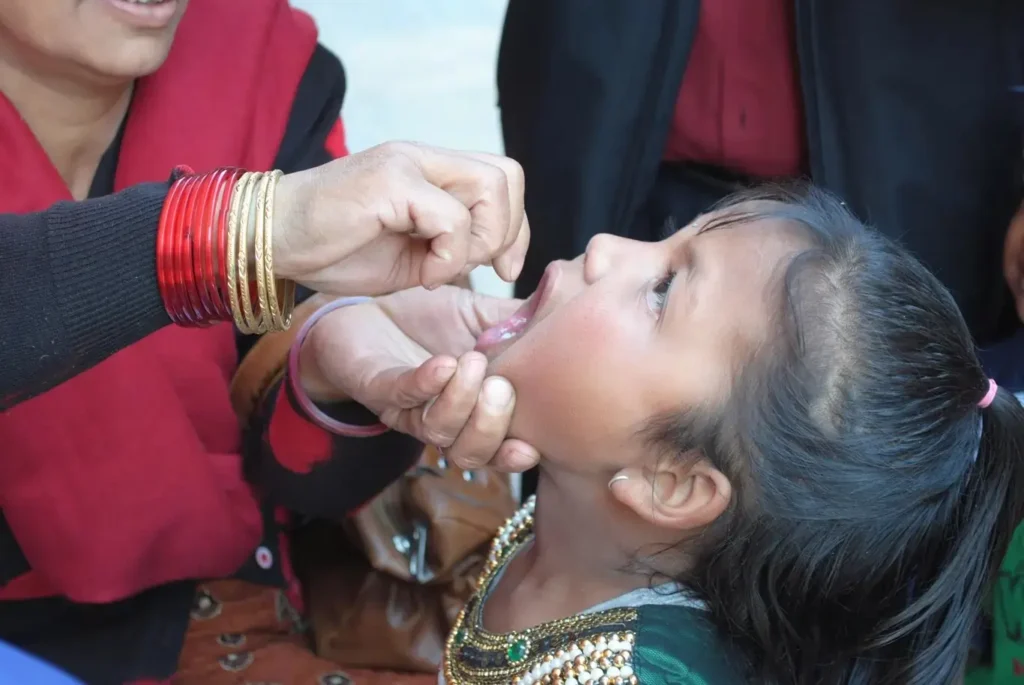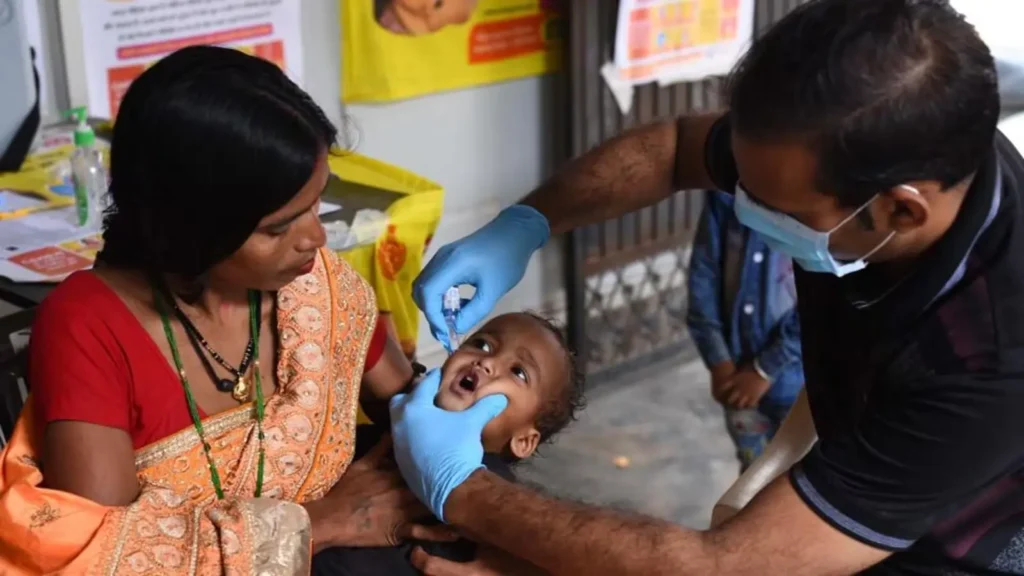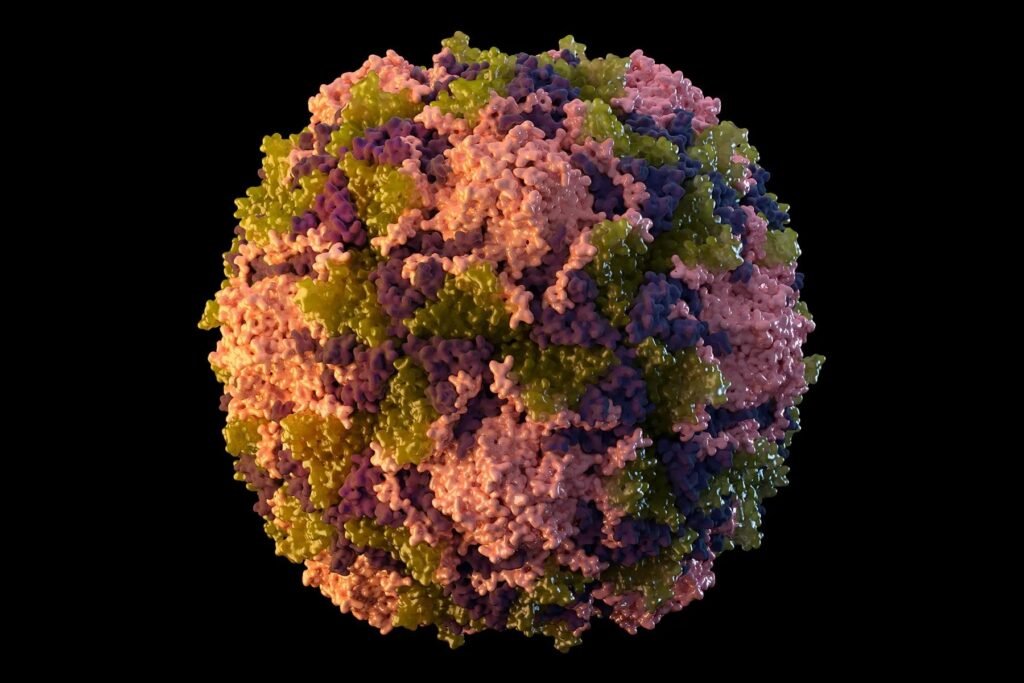Polio, short for poliomyelitis, is a viral disease that has haunted humanity for centuries. Despite significant strides in eradication efforts, pockets of the disease persist, posing a threat to vulnerable populations, particularly children. In this guide, we delve into the intricacies of polio, from its symptoms and transmission to vaccination strategies and global implications.
Table of Contents
Key Points
- Polio Basics: Polio, caused by the poliovirus, is a highly contagious disease leading to paralysis and even death, especially in children under five.
- Types of Polio: There are two types: wild poliovirus and vaccine-derived poliovirus, with the latter originating from the oral polio vaccine (OPV).
- Current Polio Status: Wild poliovirus persists in Afghanistan and Pakistan, while vaccine-derived cases have been reported in Yemen and parts of Africa.
- Symptoms: Most infected people show no symptoms, but flu-like signs can occur, and in rare cases, paralysis leading to permanent disability or death may happen.
- Transmission: Poliovirus spreads through respiratory droplets or feces, particularly in areas with poor sanitation, contaminating food and water.
- Geographical Spread: Despite global efforts, polio remains endemic in some regions, and imported cases have been reported in previously polio-free areas like Malawi and Mozambique.
- Vaccination: Two types of vaccines exist: the oral polio vaccine (OPV) and the inactivated polio vaccine (IPV), with IPV gaining popularity due to its efficacy and reduced risk of vaccine-derived poliovirus.
- Effectiveness of Vaccines: OPV prevents both individual infection and viral transmission but carries a risk of mutation. IPV, administered via injection, cannot cause vaccine-derived poliovirus but doesn’t prevent spread in already infected individuals.
- Global Efforts: Over a hundred countries have been declared polio-free, thanks to widespread vaccination campaigns, but continued vigilance is crucial to prevent a resurgence.
- Treatment and Care: While there’s no cure, supportive care such as bed rest, pain relief, and physical therapy can help manage symptoms caused by polio.

Unmasking Polio: Symptoms and Manifestations
Polio presents a spectrum of symptoms, ranging from mild flu-like manifestations to severe paralysis and even death. While many infected individuals remain asymptomatic, others may experience sore throat, fever, headaches, or stomach pain. However, less than 1% of cases escalate to debilitating paralysis, with respiratory muscle involvement posing a grave threat to life. Moreover, survivors may encounter post-polio syndrome in adulthood, characterized by muscle weakness and pain.
Unveiling the Enemy: Poliovirus Transmission
The poliovirus spreads through contaminated food, water, and respiratory droplets, thriving in environments with poor sanitation. Infected individuals become unwitting vectors, shedding the virus before and after symptom onset. Consequently, communities with inadequate hygiene practices are at heightened risk of transmission, perpetuating the cycle of infection.
Mapping the Battlefield: Global Polio Landscape
While significant strides have been made in polio eradication, the disease lingers in certain regions, notably Afghanistan, and Pakistan, and sporadically in other nations. Despite Africa’s recent triumph in eliminating wild poliovirus, imported cases underscore the persistent threat. Moreover, vaccine-derived poliovirus poses a new challenge, as evidenced by recent outbreaks in unexpected locations, prompting a renewed call for vigilance.
Armamentarium Against Polio: Vaccination Strategies
Vaccination remains the cornerstone of polio prevention, with two primary options: the oral polio vaccine (OPV) and the inactivated polio vaccine (IPV). The OPV, administered orally, bolsters individual immunity while hindering viral transmission. However, concerns about vaccine-derived poliovirus have fueled a shift towards IPV, which confers robust protection without the risk of viral reversion.

Navigating Treatment Options: Palliative Care and Support
While there is no cure for polio, supportive measures can alleviate symptoms and enhance the quality of life for affected individuals. Bed rest, pain management, assisted breathing, and physical therapy constitute integral components of care, addressing the diverse needs of patients battling the aftermath of poliovirus infection.
Conclusion: A Call to Action
As we confront the ongoing challenge of polio eradication, it is imperative to prioritize vaccination efforts, bolster surveillance systems, and bolster healthcare infrastructure. By uniting in our commitment to defeating this ancient scourge, we can safeguard future generations from the ravages of poliovirus and ensure a healthier, more resilient global community.
Important Links
- World Health Organization (WHO)
- Centers for Disease Control and Prevention (CDC)
- Global Polio Eradication Initiative
Frequently Asks Questions
What is polio?
Polio, short for poliomyelitis, is a highly contagious viral disease caused by the poliovirus. It primarily affects children under the age of five but can infect people of all ages. The virus targets the nervous system, potentially causing paralysis, muscle weakness, and, in severe cases, death.
How is polio transmitted?
Poliovirus is primarily transmitted through the fecal-oral route, often via contaminated water or food. It can also spread through direct contact with the feces of an infected person. Additionally, the virus can be transmitted through respiratory droplets when an infected person coughs or sneezes.
What are the symptoms of polio?
The majority of polio infections are asymptomatic, meaning individuals show no symptoms. However, for those who do exhibit symptoms, they can range from mild flu-like illness to more severe conditions such as muscle weakness, paralysis (often asymmetric), and in rare cases, respiratory failure. Symptoms typically appear 7 to 14 days after infection.
How is polio diagnosed?
Polio is diagnosed based on clinical symptoms, medical history, and laboratory tests. Laboratory confirmation involves isolating the poliovirus from throat swabs, stool samples, or cerebrospinal fluid. Other tests may include electromyography (EMG) to assess muscle function and imaging studies like MRI or CT scans to examine nerve damage.
What are the complications of polio?
The most significant complication of polio is paralysis, which can be temporary or permanent. Paralysis typically affects the legs but can also involve the muscles used for breathing, leading to respiratory failure. Post-polio syndrome (PPS) is another complication that can occur years after the initial infection, causing new muscle weakness and pain.
Is polio preventable?
Yes, polio is preventable through vaccination. The oral polio vaccine (OPV) and the inactivated polio vaccine (IPV) are both effective in preventing polio infections. Mass immunization campaigns, routine vaccination programs, and maintaining high vaccination coverage are crucial strategies for polio eradication.
What is the history of polio vaccination?
The first effective polio vaccine was developed by Dr. Jonas Salk in the 1950s, followed by the oral polio vaccine developed by Dr. Albert Sabin. These vaccines led to a significant reduction in polio cases globally. Since then, widespread vaccination efforts, led by organizations like the World Health Organization (WHO) and UNICEF, have contributed to the near-eradication of polio.
Why is polio eradication important?
Eradicating polio is important because it would eliminate the suffering and disability caused by the disease. It would also lead to substantial cost savings in healthcare and prevent outbreaks of polio in regions where it has been eliminated. Additionally, the eradication of polio would demonstrate the effectiveness of global vaccination efforts and serve as a model for tackling other infectious diseases.
What are the challenges to polio eradication?
Challenges to polio eradication include vaccine hesitancy, particularly in some communities or regions, which can lead to low vaccination coverage. Additionally, reaching remote or conflict-affected areas with vaccination campaigns can be difficult. Moreover, the poliovirus can continue to circulate silently in populations with inadequate immunity, leading to potential outbreaks.
Where does the world stand in terms of polio eradication?
As of the latest data, significant progress has been made towards polio eradication. The number of polio cases has decreased dramatically over the decades, with only a few countries reporting endemic transmission. However, challenges remain, and efforts are ongoing to address them, with the ultimate goal of achieving global polio eradication and ensuring that the disease does not resurge.
Related Articles
- Understanding the Impact of Certain Carbohydrates on Weight Loss and Diabetes Risk
- Unraveling the Enigma of COVID-19 Origins In Detailed
- Revolutionizing Bowel Cancer Diagnosis: UK Researchers’ Breakthrough
- Persistent COVID-19 Infections More Common Than Expected
- Unlock the Secrets of the Mediterranean Diet: Easy Tips and Delicious Recipes to Master


